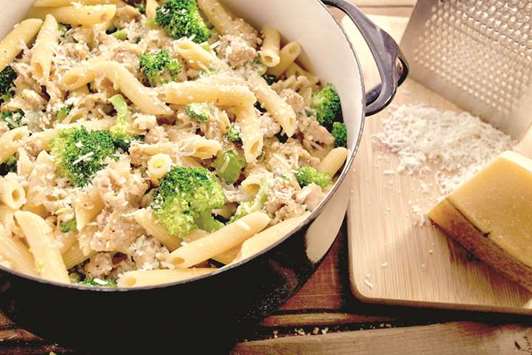One of the most remarkable things about pasta is how long it’s been around. It is really amazing that this common food has changed very little over the hundreds of years it has been around. The ancient Greeks and Romans undoubtedly made and prepared pasta almost similarly to the way it is prepared now – dishes made during that era would be easily recognisable today. Any food that can satisfy and remain relatively unchanged for 500 years surely has some remarkable properties.
In Germany and Hungary they call it Spaetzle, in Greece they call it Orzo, and in Poland they call it Pierogi. The American version of the pasta is prepared and served similarly to how it is prepared in Italy. One exception is the all American spaghetti and meatballs, which is the American version of the popular Italian food.
When we think of pasta, we all believe that it originated in Italy. Well this is true to an extent, as pasta is traditionally Italian. But it is almost impossible to know who came up with the dish first. The word “Pasta” translates to Paste in Italian. This is a reference to the dough made from flour, water and eggs. All simple ingredients, which have been around for centuries.
This makes it hard to differentiate pasta from other ancient dishes made from the same ingredients. In addition, pasta has always been a food for the common man and has been a staple food since long.
I strongly believe one more reason why pasta excites everyone is its availability in different shapes and sizes. Although one might think of this as a gimmick but the truth is that it serves a good purpose. Providing lot of surface area on this starchy food allows sauces to cling well. Coming in a variety of shapes means the ability to stuff, layer or otherwise offer versatility in recipe invention.
One more theory states that pasta was brought to Italy by Marco Polo during the 13th century and that it is the descendent of ancient Asian noodles. One major difference between pasta and noodles is that pasta is made with durum wheat, versus all-purpose flour for noodle. The durum wheat dough is pressed into sheets, cut into a variety of shapes and cooked before serving.
Pasta is one of the very few food items that blend well a vast variety of other ingredients. Everything from meats to vegetables to condiments can be a part of a great pasta recipe. Despite its reputation of being unhealthy, I must say that pasta is not that big of a culprit. If prepared with caution, it provides around 200 calories per cup and suits even those on a diet. As a complex carbohydrate, it is digested slowly, leading to an even and gradual production of blood sugar.
The popularity of this food is also evident from the many successful Italian restaurants around the globe and almost all of them do exceptionally well. One thing that has helped pasta become a household favourite is the introduction of machines in pasta production over the years. The variety and utility of rollers, cutters, bowls and other tools is greater than ever. Materials science and ergonomic designs have made these things stronger, healthier and less expensive. Pasta machines are cheaper, more reliable and come with a larger assortment of useful attachments than they did even as recently as twenty years ago.
Chicken n Broccoli Pasta
Ingredients
Broccoli florets 250 gm
Penne pasta 400 gm
Chicken breast 4 nos
Salt to taste
White pepper powder to taste
Olive oil 1 tbsp
Garlic 2-3 cloves
Chicken broth 1/2 cup
Heavy cream 1 cup
Parmesan cheese 2 tbsp
Garnish
Mint leaves few sprigs
Parmesan cheese to garnish
Method
Take broccoli florets and blanch them in salted water; refresh in ice water and keep them aside.
Bring a large pot of water with salt to a boil. Add pasta and cook till al dente; drain the pasta in colander.
Season the chicken breast with salt and pepper. Heat oil in a skillet and cook the chicken breast from both sides until cooked.
In the same skillet add minced garlic and saute for 1-2 minutes or just until it is soft.
Add chicken broth to the skillet and stir to dissolve all the browned bits off the bottom of the skillet.
Add heavy cream, and stir to combine and allow the cream to simmer.
Simmer the sauce to reduce it; add shredded chicken breast, boiled pasta and broccoli florets and stir to combine.
Adjust the seasoning and add grated parmesan cheese.
Serve hot, garnished with mint sprig and remaining parmesan cheese.
* Chef Tarun Kapoor,
Culinary Mastermind, USA. He may be contacted at [email protected]



